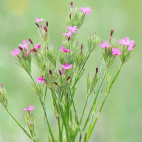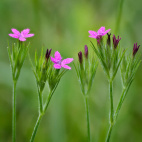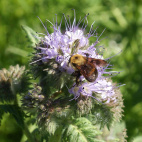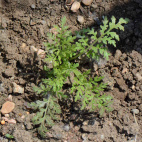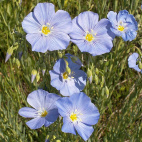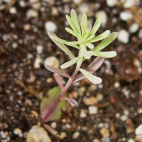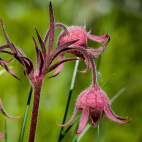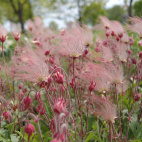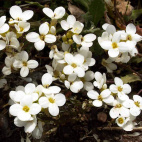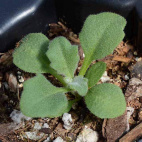Color
Availability
USDA Zone
Region
Type
Duration
Season
Germination
Soil
Sunlight
Height
Use
Narrow Your Search
Color
Availability
USDA Zone
Region
Type
Duration
Season
Germination
Soil
Sunlight
Height
Use
Wildflower Seeds - California Region
The wildflower species listed in the California Region are those that would grow well in the Central Valley as well as the coastal areas of Southern California. If you are in the mountains you might want to check out the Mountain Region, or if you are in the desert areas in the south, you'll want to look at the Dry West Region. The species of bulk wildflowers listed on this page are those that are either native here, or are annuals that grow well in this zone. There are hundreds of bulk California wildflower seeds to choose from, so please use the filters along the left side of the screen to narrow your search to match your soils, lighting, and any other attributes that you may want. If you are looking for something that is strictly native to your immediate area, you can check out the distribution map that is found on the detail pages of most of the species.
-
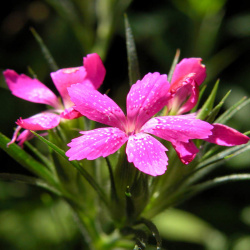 Deptford Pink Seeds
Dianthus armeria
This European native is closely related to the old-fashioned Sweet William. The lovely pink blossoms feature delicate fringed edging. It is an annual that is very easy to grow.Quick View$3.96 Pkt - $100.00 / Oz
Deptford Pink Seeds
Dianthus armeria
This European native is closely related to the old-fashioned Sweet William. The lovely pink blossoms feature delicate fringed edging. It is an annual that is very easy to grow.Quick View$3.96 Pkt - $100.00 / Oz -
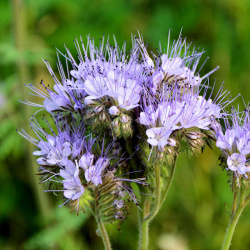 Lacy Phacelia Seeds
Phacelia tanacetifolia
This annual is a popular honey plant and creates an unforgettable lavender carpet that is always buzzing. The resilient desert native flourishes in lots of sunlight, and can handle heat and drought. It also is effortless to grow and produces a lot of seeds that can sprout the following year.Quick Viewx
Lacy Phacelia Seeds
Phacelia tanacetifolia
This annual is a popular honey plant and creates an unforgettable lavender carpet that is always buzzing. The resilient desert native flourishes in lots of sunlight, and can handle heat and drought. It also is effortless to grow and produces a lot of seeds that can sprout the following year.Quick ViewxLacy Phacelia Seeds
Phacelia tanacetifolia
This annual is a popular honey plant and creates an unforgettable lavender carpet that is always buzzing. The resilient desert native flourishes in lots of sunlight, and can handle heat and drought. It also is effortless to grow and produces a lot of seeds that can sprout the following year.
$3.48 Pkt - $5.96 / Oz -
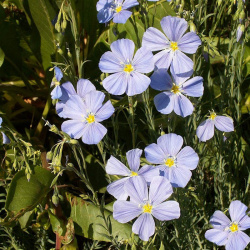 Lewis Flax Seeds
Linum lewisii
This western native grows in lovely, pale blue profusion, and is named after the Lewis and Clark expedition. It is similar to Blue Flax but is a little shorter, and not quite as vivid. Some gardeners like to mix the two varieties to create a bit more texture in the planting. This perennial is very easy to grow and looks great when planted en masse.Quick Viewx
Lewis Flax Seeds
Linum lewisii
This western native grows in lovely, pale blue profusion, and is named after the Lewis and Clark expedition. It is similar to Blue Flax but is a little shorter, and not quite as vivid. Some gardeners like to mix the two varieties to create a bit more texture in the planting. This perennial is very easy to grow and looks great when planted en masse.Quick ViewxLewis Flax Seeds
Linum lewisii
This western native grows in lovely, pale blue profusion, and is named after the Lewis and Clark expedition. It is similar to Blue Flax but is a little shorter, and not quite as vivid. Some gardeners like to mix the two varieties to create a bit more texture in the planting. This perennial is very easy to grow and looks great when planted en masse.
$3.48 Pkt - $12.65 / Oz -
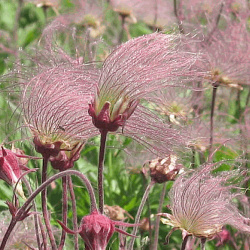 Prairie Smoke Seeds
Geum triflorum
Feathery, pink wisps float atop these dreamy native flowers, like so many plumes of smoke. This small novelty plant will add ornamental value to rock gardens or borders, and interest and diversity to any native planting.Quick View$3.96 Pkt - $280.00 / Oz
Prairie Smoke Seeds
Geum triflorum
Feathery, pink wisps float atop these dreamy native flowers, like so many plumes of smoke. This small novelty plant will add ornamental value to rock gardens or borders, and interest and diversity to any native planting.Quick View$3.96 Pkt - $280.00 / Oz -
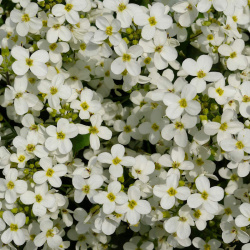 On Sale!
Rockcress Seeds
Arabis alpina
This attractive foliage forms a dense mat close to the ground, while the stems support clusters of pure white, tiny flowers. The native groundcover also grows well in rock gardens.Quick View$3.48 Pkt - $16.57 / Oz
On Sale!
Rockcress Seeds
Arabis alpina
This attractive foliage forms a dense mat close to the ground, while the stems support clusters of pure white, tiny flowers. The native groundcover also grows well in rock gardens.Quick View$3.48 Pkt - $16.57 / Oz
The wildflower species listed in the California Region are those that would grow well in the Central Valley as well as the coastal areas of Southern California. If you are in the mountains you might want to check out the Mountain Region, or if you are in the desert areas in the south, you'll want to look at the Dry West Region. The species of bulk wildflowers listed on this page are those that are either native here, or are annuals that grow well in this zone. There are hundreds of bulk California wildflower seeds to choose from, so please use the filters along the left side of the screen to narrow your search to match your soils, lighting, and any other attributes that you may want. If you are looking for something that is strictly native to your immediate area, you can check out the distribution map that is found on the detail pages of most of the species.






